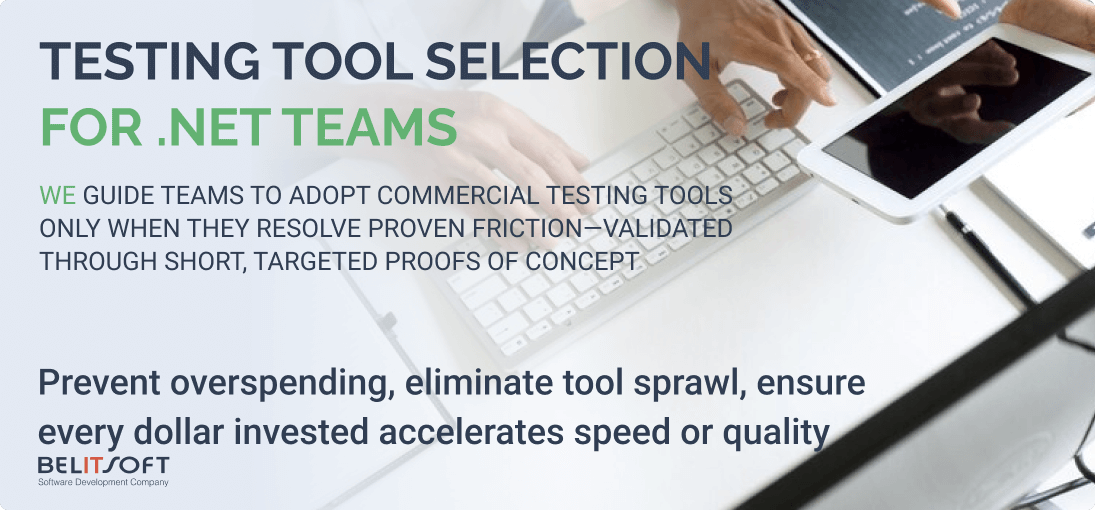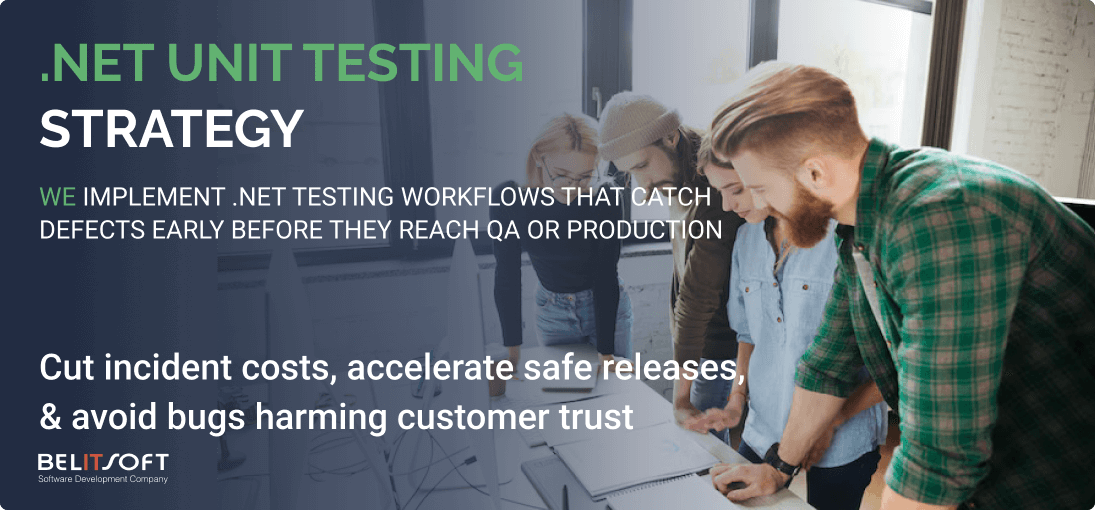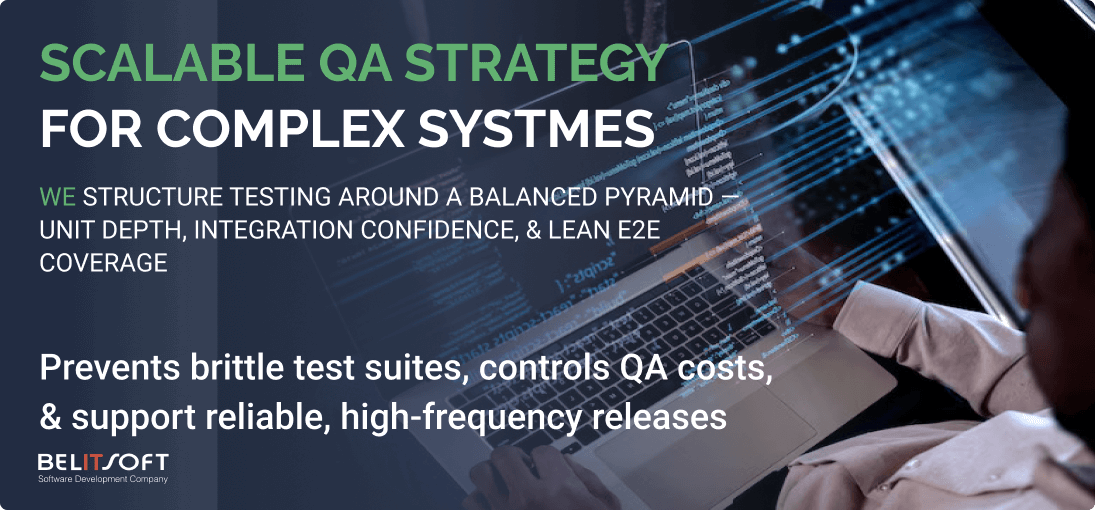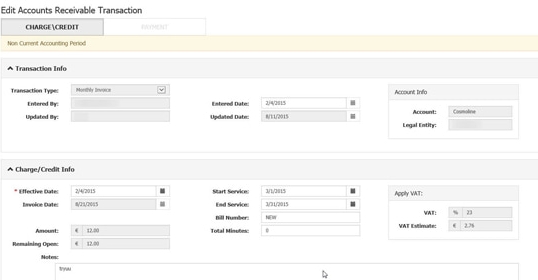Technical executives and decision-makers (CTOs, VPs of Engineering, Engineering Directors) who control budget and strategy for software testing at some stage realize they have a critical problem - inadequate testing is a business risk, not just a technical issue. Poor testing directly impacts brand value and customer satisfaction. Belitsoft helps engineering teams implement rigorous, scalable unit testing strategies that cut release risks, accelerate development cycles, and deliver provable ROI. We bring the tools, the team, and the testing mindset to help you deliver software products with confidence.
Types of .NET Unit Testing Frameworks
When your engineering teams write tests for .NET code, they almost always reach for one of three frameworks: NUnit, xUnit, or MSTest. All three are open-source projects with active communities, so you pay no license fees and can count on steady updates.
NUnit
NUnit is the elder statesman, launched in 2002. Over two decades, it has accumulated a set of features - dozens of test attributes, powerful data-driven capabilities, and a plugin system that lets teams add almost any missing piece. That breadth is an advantage when your products rely on complex automation.
xUnit
xUnit was created later by two of NUnit's original authors. xUnit express almost everything in plain C#. Microsoft's own .NET teams use it in their open-source repositories, and a large developer community has formed around it, creating a steady stream of how-tos, plugins, and talent. The large talent pool around xUnit reduces hiring risk.
MSTest
MSTest goes with Visual Studio and plugs straight into Microsoft's toolchain - from the IDE to Azure DevOps dashboards. Its feature set sits between NUnit's abundance and xUnit's austerity. Developers get working tests the moment they install Visual Studio, and reports flow automatically into the same portals many enterprises already use for builds and deployments. MSTest works out of the box means fewer consulting hours to configure IDEs and build servers.
Two open-source frameworks - xUnit and NUnit - have become the tools of choice, especially for modern cloud-first work. Both are maintained by the .NET Foundation and fully supported in Microsoft's command-line tools and IDEs. While MSTest's second version has closed many gaps and remains serviceable - particularly for teams deeply invested in older Visual Studio workflows - the largest talent pool is centered on xUnit and NUnit.
Open-source frameworks cost nothing but talent, while commercial suites such as IntelliTest or Typemock promise faster setup, integrated AI helpers, and vendor support.
We help teams align .NET unit testing frameworks with their architecture, tools, and team skills and get clarity on the right testing stack - so testing fits your delivery pipeline, not the other way around. Talk to a .NET testing expert.
How safe are the tests?
xUnit creates a new test object for each test, so tests cannot interfere with each other. Cleaner tests mean fewer false positives.
Where are the hidden risks?
NUnit allows multiple tests to share the same fixture (setup and teardown). This can speed up development, but if misused, it may allow bugs to hide.
Will your tools still work?
All major IDEs (Visual Studio, Rider) and CI services (GitHub Actions, Azure DevOps, dotnet test) recognize both frameworks out of the box, with no extra licenses, plugins, or migration costs.
Is one faster?
Not in practice. Both libraries run tests in parallel - the total test suite time is limited by your I/O or database calls, not by the framework itself.

Additional .NET Testing Tools
While the test framework forms the foundation, effective test automation relies on five core components. Each one must be selected, integrated, and maintained.
1. Test Framework
The test framework is the engine that actually runs every test. Because the major .NET runners (xUnit, NUnit, MSTest) are open-source and mature, they rarely affect the budget. They simply need to be chosen for their fit and community support. The real spending starts further up the stack with developer productivity boosters, such as JetBrains ReSharper or NCrunch. The license fee is justified only if it reduces the time developers wait for feedback.
2. Mocking and Isolation
Free libraries such as Moq handle routine stubbing - they create lightweight fake objects to stand in for things like databases or web services during unit tests, letting the tests run quickly and predictably without calling the real systems. However, when the team needs to break into tightly coupled legacy code - such as static methods, singletons, or vendor SDKs - premium isolators like Typemock or Visual Studio Fakes become the surgical tools that make testing possible. These are tools you use only when necessary.
3. Coverage Analysis
Coverlet, the free default, tells you which lines were executed. Commercial options, such as dotCover or NCover, provide richer analytics and dashboards. Pay for them only if the extra insight changes behavior - for example, by guiding refactoring or satisfying an auditor.
4. Test Management Platforms
Once your test counts climb into the thousands, raw pass/fail numbers become unmanageable. Test management platforms such as Azure DevOps, TestRail, or Micro Focus ALM turn those results into traceable evidence that links requirements, defects, and regulatory standards. Choose the platform that already integrates with your backlog and ticketing tools. Poor integration can undermine every return on investment you hoped to achieve.
5. Continuous Integration Infrastructure
The continuous integration (CI) infrastructure is where "free" stops being free. Cloud pipelines and on-premises agents may start out inexpensive, but compute costs rise with every minute of execution time. Paradoxically, adding more agents in services like GitHub Actions or Azure Pipelines often pays for itself because faster runs reduce developer idle time and catch regressions earlier, cutting down on rework.
Three principles keep costs under control: start with the free building blocks, license commercial tools only when they solve a measurable bottleneck, and always insist on a short proof of concept before making any purchase.

Implementing .NET Unit Testing Strategy
With the right tools selected, the focus shifts to implementation strategy. This is where testing transforms into a business differentiator.
Imagine two product launches. In one, a feature-rich release sails through its automated pipeline, reaches customers the same afternoon, and the support queue stays quiet. In the other, a nearly done build limps into QA, a regression slips past the manual tests, and customers vent on social media. The difference is whether testing is treated as a C-suite concern.
IBM's long-running defect cost studies reveal that removing a bug while the code is still on a developer's machine costs one unit. The same bug found in formal QA costs about six units, and if it escapes to production, the cost can be 100 times higher once emergency patches, reputation damage, and lost sales are factored in. Rigorous automated tests move defect discovery to the cheapest point in the life cycle, protecting both profit margin and brand reputation.
Effective testing accelerates progress rather than slowing it down. Test suites that once took days of manual effort now run in minutes. Teams with robust test coverage dominate the top tier of DORA metrics (KPIs of software development teams), deploying to production dozens of times per week while keeping failure rates low.
What High-Performing Firms Do
They start by rewriting the "Definition of Done". A feature is not finished when the code compiles. It is finished when its unit and regression tests pass in continuous integration. Executives support this with budget, but insist on data dashboards to track coverage for breadth, defect escape rate, and mean time to recovery and watch those metrics improve quarter after quarter.

Unit Testing Strategy During .NET Core Migration
Testing strategy becomes even more critical during major transitions, such as migrating to .NET Core/Platform. When teams begin a migration, the temptation is to dive straight into porting code. At first, writing tests seems like a delay because it adds roughly a quarter more effort to each feature. But that small extra investment buys an insurance policy the business can't afford to skip.
A well-designed test suite locks today's behavior in place, runs in minutes, and triggers an alert the moment the new system isn't perfectly aligned with the old one. Because problems appear immediately, they can be solved in hours, not during a frantic post-go-live scramble.
Executives sometimes ask, "Can't we just rely on manual QA at the end?" Experience says no. Manual cycles are slow, expensive, and incomplete. They catch only what testers happen to notice. Automated tests, by contrast, compare every critical calculation and workflow on every build. Once they are written, they cost almost nothing to run - the ideal fixed asset for a multi-year platform.
The biggest technical obstacle is legacy "God" code - monolithic difficult to maintain, test, and understand code that handles many different tasks. The first step is to add thin interfaces or dependency injection points, so each piece can be tested independently. Where that isn't yet possible, isolation tools like Microsoft Fakes allow progress without a full rewrite.
Software development engineers in test (SDETs) from day one write characterization tests around the old code before the first line is ported, then keep both frameworks compiling in parallel. This dual targeted build lets developers make progress while the business continues to run on the legacy system - no Big Bang weekend cutover required.

Teams that invested early in tests reported roughly 60 percent fewer user acceptance cycles, near-zero defects in production, and the freedom to adopt new .NET features quickly and safely. In financial terms, the modest test budget paid for itself before the new platform even went live.
Unit Tests in the Testing Pyramid
While unit tests form the foundation, enterprise-scale systems require a comprehensive testing approach. When you ask an engineering leader how they keep software launches both quick and safe, you'll hear about the testing pyramid.
Picture a broad base of unit tests that run in seconds and catch most defects while code is still inexpensive to fix.
Halfway up the pyramid are integration tests that verify databases, APIs, and message brokers really communicate with one another.
At the very top are a few end-to-end tests that click through an entire user journey in a browser. These are expensive to maintain.
Staying in this pyramid is the best way to keep release cycles short and incident risk low.
Architectural choices can bend the pyramid. In microservice environments, leaders often approve a "diamond" variation that widens the middle, so contracts between services get extra scrutiny. What they never want is the infamous "ice cream cone", where most tests occur in the UI. That top-heavy pattern increases cloud costs, and routinely breaks builds. These problems land directly on a COO's dashboard.
Functional quality is only one dimension. High growth platforms schedule regular performance and load tests, using tools such as k6, JMeter, or Azure Load Testing, to confirm they can handle big marketing pushes and still meet SLAs. Security scanning adds another safety net. Static analysis combs through source code, while dynamic tests probe running environments to catch vulnerabilities long before auditors or attackers can.
Neither approach replaces the pyramid. They simply shield the business from different kinds of risk.

From a financial standpoint, quality assurance typically absorbs 15 to 30 percent of the IT budget. The latest cross-industry average is close to 23 percent. Most of that spend goes into automation. Over ninety percent of surveyed technology executives report that the upfront cost pays off within a couple of release cycles, because manual regressions testing almost disappears.
The board level takeaway is: insist on a healthy pyramid, or diamond if necessary, supplement it with targeted performance and security checks, and keep automation integrated end to end. That combination delivers faster releases, fewer production incidents, and ultimately, a lower total cost of quality.
Security Unit Tests
Among the specialized testing categories, security testing deserves particular attention. In the development pipeline, security tests should operate like an always-on inspector that reviews every change the instant it is committed.
As code compiles, a small suite of unit tests scans each API controller and its methods, confirming that every endpoint is either protected by the required [Authorize] attribute or is explicitly marked as public. If the test discovers an unguarded route, the build stops immediately. That single guardrail prevents the most common access control mistakes from traveling any farther than a developer's laptop, saving the business the cost and reputation risk of later stage fixes.
Because these tests run automatically on every build, they create a continuous audit log. When a PCI-DSS, HIPAA, or GDPR assessor asks for proof that your access controls really work, you just export the CI history that shows the same checks passing release after release. Audit preparation becomes a routine report.
Good testing engineers give the same attention to the custom security components - authorization handlers, cryptographic helpers, and policy engines - by writing focused unit tests that push each one through success paths, edge cases, and failure scenarios. Generic scanners often overlook these custom assets, so targeted tests are the surest way to protect them.
All of these tests are wired into the continuous integration gate. A failure - whether it signals a missing attribute, a broken crypto routine, or an unexpected latency spike - blocks the merge. In this model, insecure or slow code simply cannot move downstream.
Performance matters as much as safety, so experienced QA experts add microbenchmark tests that measure the overhead of new security features. If an encryption change adds more delay than the agreed budget, the benchmark fails, and they adjust before users feel any slowdown or cloud bills start to increase.

The unit testing is the fastest and least expensive place to catch the majority of routine security defects. However, unit tests, by nature, can only see what happens inside the application process. They cannot detect a weak TLS configuration, a missing security header, or an exposed storage bucket. For those risks, test engineers rely on integration tests, infrastructure as code checks, and external scanners. Together, they provide complete coverage.
Hire Experts in .NET Unit Testing
Implementing all these testing strategies requires skilled professionals. Great testers master the language and tools of testing frameworks so the build pipeline runs smoothly and quickly and feedback arrives in seconds. They design code with seams (technique for testing and refactoring legacy code) that make future changes easy instead of expensive. They also produce stable test suites. The result is shorter cycle times and fewer defects that are visible to customers.
According to the market, "quality accelerators" are scarce and highly valued. In the USA, test focused engineers (SDETs) average around $120k, while senior developers who can lead testing efforts command $130k to $140k.
Hiring managers can see mastery in action. A short question about error handling patterns reveals conceptual depth. A live coding exercise, run TDD style, shows whether an engineer works with practiced rhythm or with guesswork. Scenario discussions reveal whether the candidate prepares for future risks, like an unexpected surge in traffic or a third party outage, instead of just yesterday's problems. Behavioral questions complete the picture: Have they helped a team improve coverage? Have they restored a flaky test suite to health?
Belitsoft combines its client-focused approach with longstanding expertise in managing and providing testing teams from offshore locations to North America (Canada, USA), Australia, the UK, Israel, and other countries. We deliver the same quality as local talent, but at lower rates - so you can enjoy cost savings of up to 40%.
Recommended posts
Portfolio
Our Clients' Feedback


















.png)
![.NET Development Tools and Technologies [2025 Trends]](/uploads/images/blogposts/net-development-services/tools/dotnet_ecosystem-image(600x250-crop).png)
.png)
.jpg)
.jpg)
.jpg)
.jpg)
.jpg)
.jpg)
.jpg)
.jpg)
.jpg)
.jpg)
.jpg)
.jpg)
.jpg)
.jpg)
.jpg)
.jpg)
.jpg)
.jpg)
.jpg)
.jpg)
.jpg)
.jpg)
.jpg)
.jpg)
.jpg)
.jpg)
.jpg)
.jpg)
.jpg)
.jpg)


























We have been working for over 10 years and they have become our long-term technology partner. Any software development, programming, or design needs we have had, Belitsoft company has always been able to handle this for us.
Founder from ZensAI (Microsoft)/ formerly Elearningforce